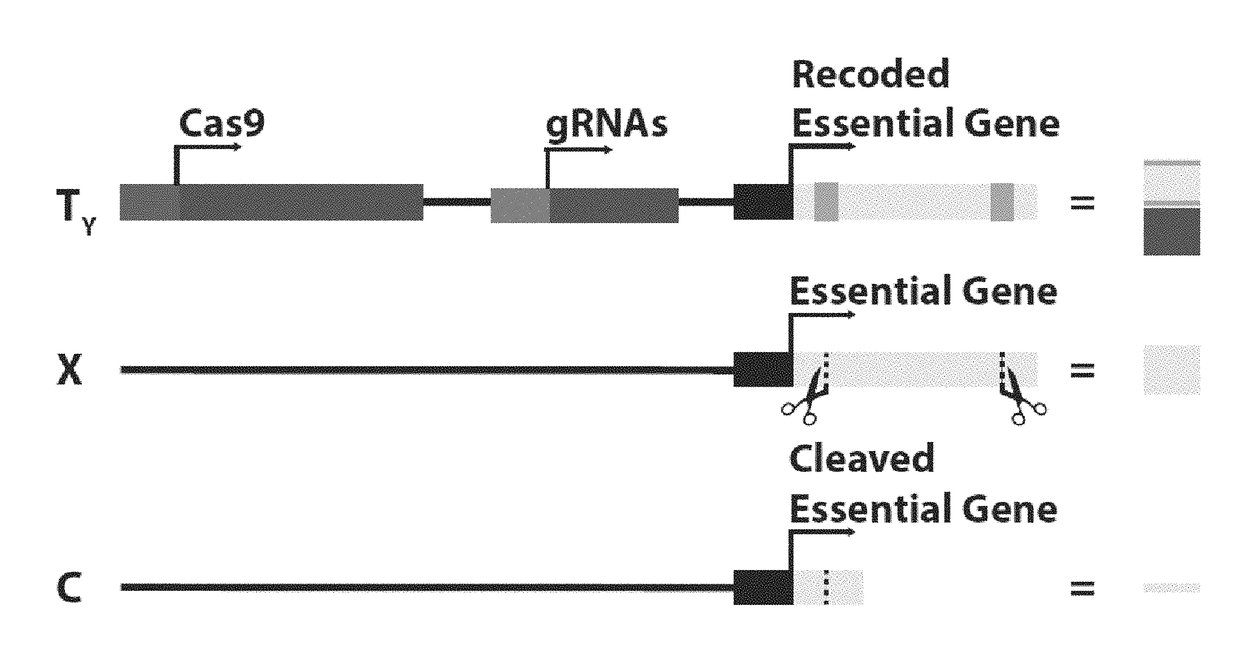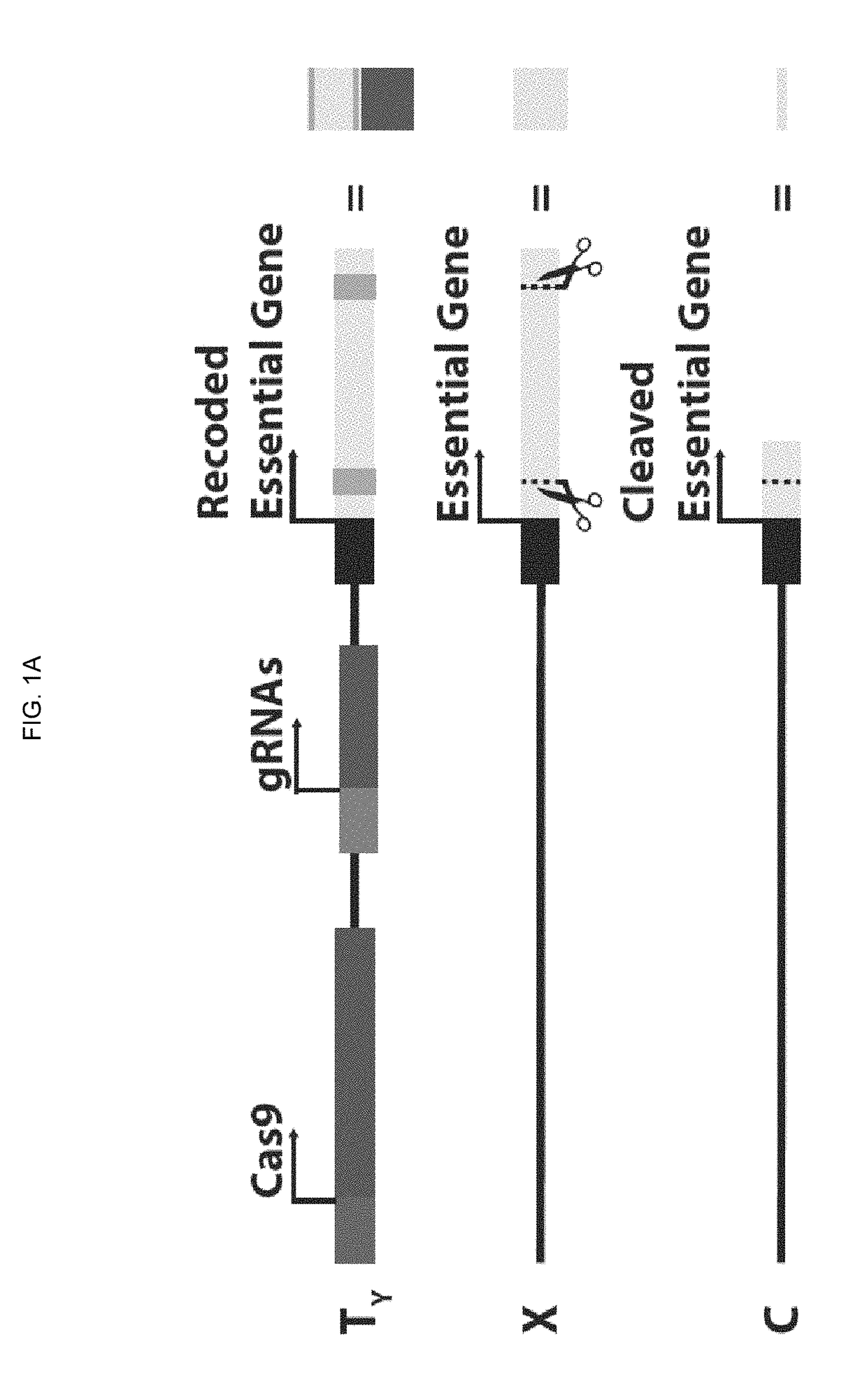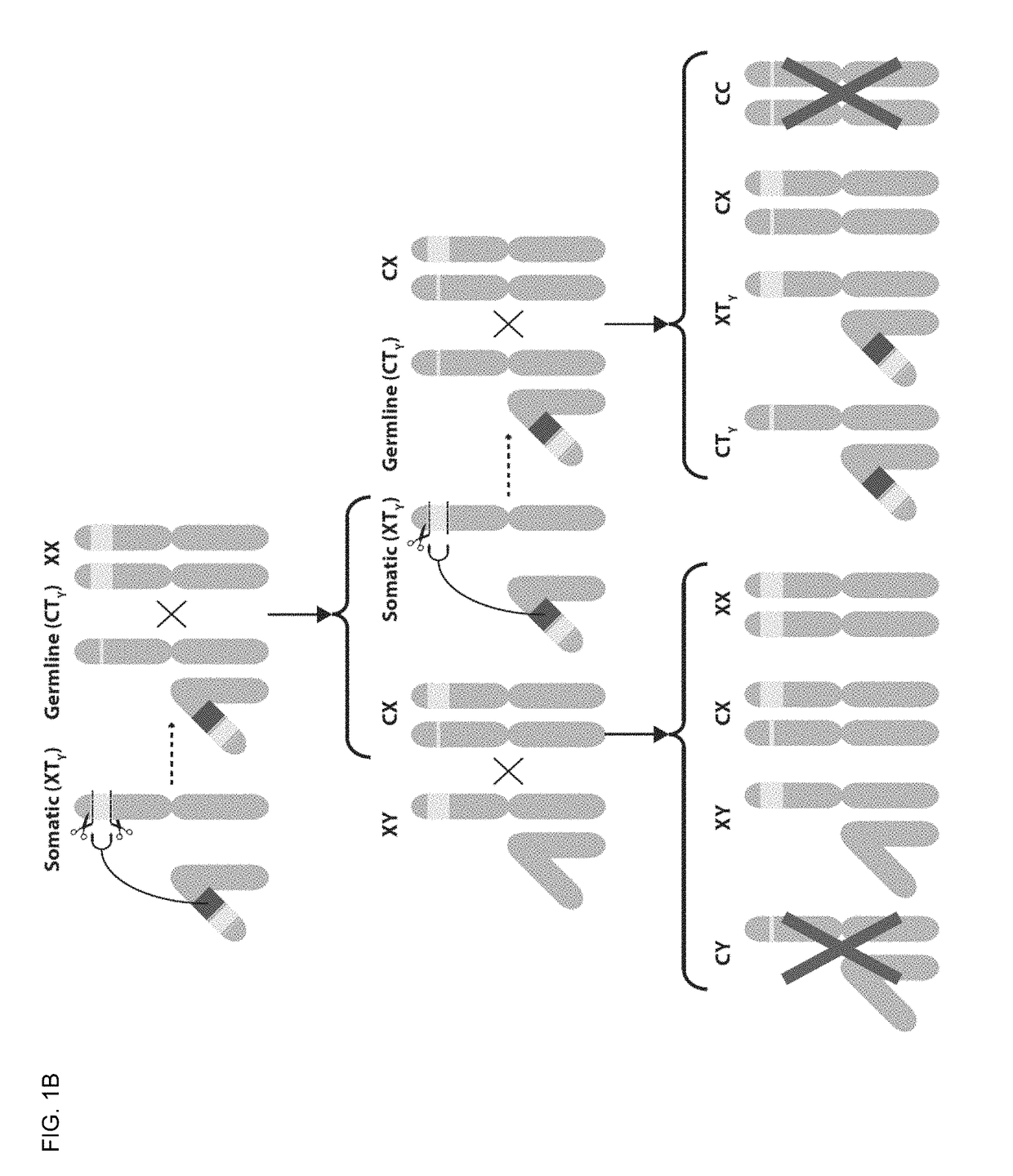DNA sequence modification-based gene drive
- Summary
- Abstract
- Description
- Claims
- Application Information
AI Technical Summary
Benefits of technology
Problems solved by technology
Method used
Image
Examples
example 1
X Chromosome Cleavage Mediated Y Chromosome Drive
[0187]X chromosome cleavage mediated Y chromosome Drive (also referred to herein as X cleavage mediated Y drive) consists of Cas9, gRNAs which target an essential (i.e. recessive lethal) gene on the X chromosome, and a recoded copy of this target X gene which is immune to gRNA targeting, which are situated together at the same locus on the Y chromosome (FIG. 1A). The transgenic construct (TY) is situated on the Y chromosome and consists of Cas9 (long green rectangle), gRNAs (short green rectangle) targeting an essential gene on the X chromosome, and a recoded version of the target gene (yellow rectangle with recoded gRNA target sites in orange) (FIG. 1A). Potential cleavage sites on the target essential gene (X) are indicated by dashed lines and scissors, and the cleaved locus (C) is a null form of the target gene made of what remains of the gene from the outer ends of the cleavage sites (FIG. 1A).
[0188]In males who carry this constru...
example 2
Cleavage Mediated X Drive
[0191]Cleavage mediated X drive consists of Cas9, gRNAs which target an essential gene on the X chromosome, and a recoded or sequence unrelated copy of this target X gene which is immune to gRNA targeting, which are situated together at the same locus as the target gene (FIG. 2A). The transgenic construct (TX) is situated on the X chromosome and consists of Cas9 (long green rectangle), gRNAs (short green rectangle) targeting an essential gene on the X chromosome (at the same locus as TX), and a recoded version of the target gene (yellow rectangle with recoded gRNA target sites in orange) (FIG. 2A). Potential cleavage sites on the target essential gene (X) are indicated by dashed lines and scissors, and the cleaved locus (C) is a null form of the target gene made of what remains of the gene from the outer ends of the cleavage sites (FIG. 2A).
[0192]In females who carry this construct (TX) and a normal X chromosome (X), the target gene is cleaved multiple times...
example 3
Autosomal Cleavage Mediated Autosomal Drive
[0195]Cleavage mediated autosomal drive consists of Cas9, gRNAs which target an essential autosomal gene, and a recoded or sequence unrelated copy of this target gene which is immune to gRNA targeting, which are situated together at the same locus as the target gene (FIG. 3A). The transgenic construct (T) is situated on an autosome and consists of Cas9 (long green rectangle), gRNAs (short green rectangle) targeting an essential gene (at the same autosomal locus as T), and a recoded version of the target gene (yellow rectangle with recoded gRNA target sites in orange) (FIG. 3A). Potential cleavage sites on the target essential gene (A) are indicated by dashed lines and scissors, and the cleaved locus (C) is a null form of the target gene made of what remains of the gene from the outer ends of the cleavage sites (FIG. 3A).
[0196]In males and females who carry the construct (T) and a wild type copy of the its target (A), the target gene is clea...
PUM
| Property | Measurement | Unit |
|---|---|---|
| Ratio | aaaaa | aaaaa |
| Frequency | aaaaa | aaaaa |
Abstract
Description
Claims
Application Information
 Login to View More
Login to View More - R&D
- Intellectual Property
- Life Sciences
- Materials
- Tech Scout
- Unparalleled Data Quality
- Higher Quality Content
- 60% Fewer Hallucinations
Browse by: Latest US Patents, China's latest patents, Technical Efficacy Thesaurus, Application Domain, Technology Topic, Popular Technical Reports.
© 2025 PatSnap. All rights reserved.Legal|Privacy policy|Modern Slavery Act Transparency Statement|Sitemap|About US| Contact US: help@patsnap.com



